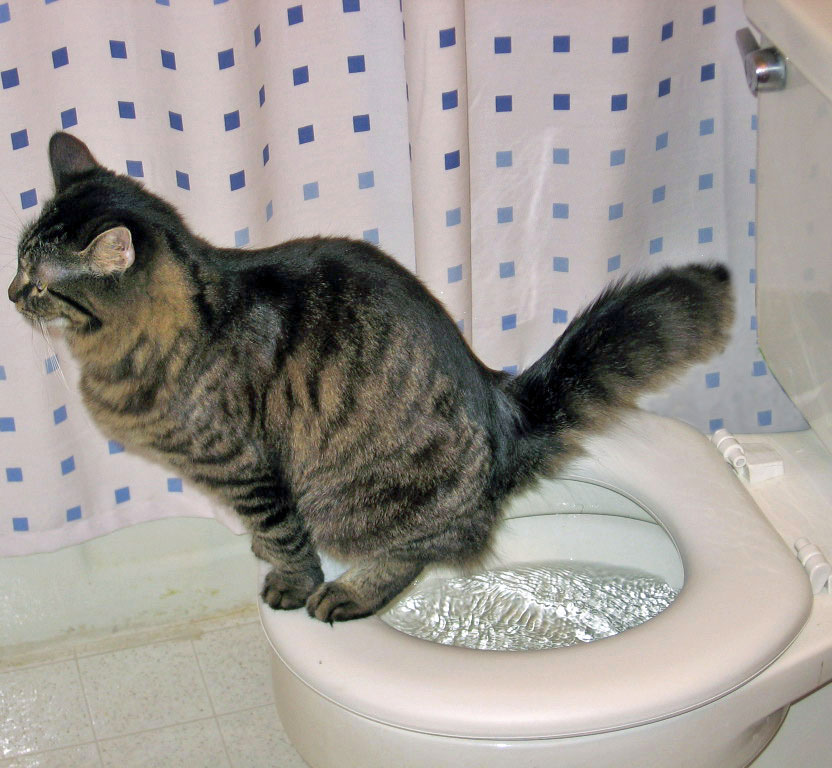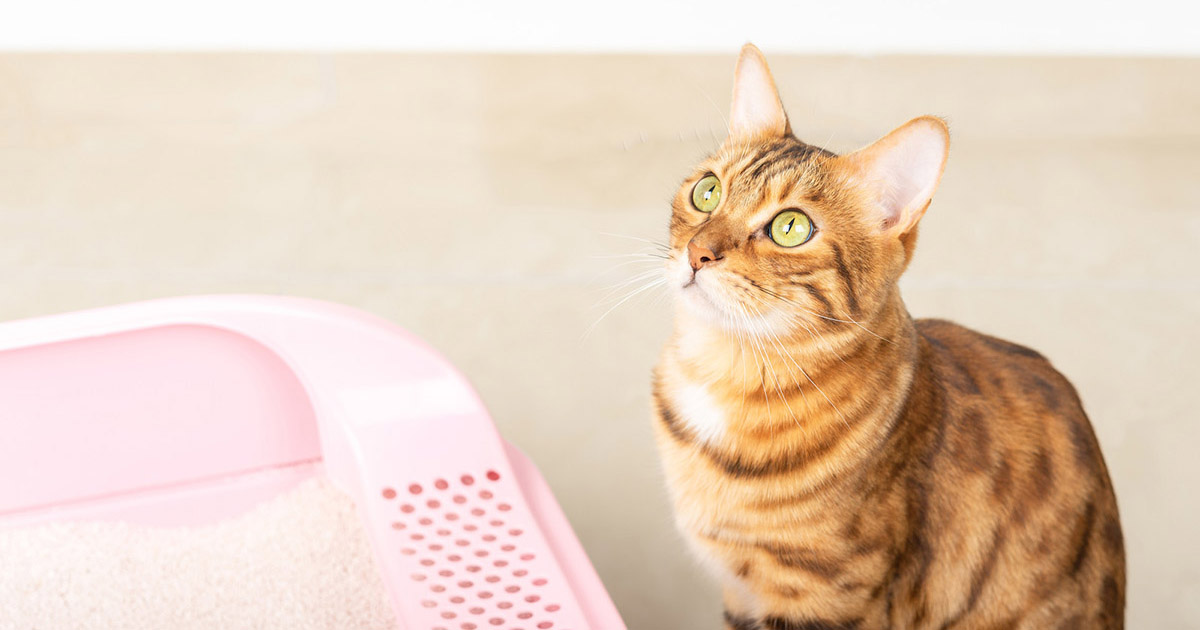Everyone will have their own unique conception when it comes to Don't Flush Your Pets Poo Down The Loo, Vet Warns.

When it pertains to throwing away waste, particularly animal waste, many people usually consider the hassle-free alternative of flushing it down the bathroom. Nonetheless, this seemingly simple option can have major repercussions for the environment and public health. In this article, we'll explore why flushing animal waste down the toilet is a bad idea and provide alternative approaches for appropriate disposal.
Intro
Appropriate waste disposal is important for keeping ecological sustainability and public health. While it might seem safe to flush animal waste down the bathroom, it can result in numerous issues, both for the setting and human health.
Threats of flushing pet waste
Ecological influence
Purging pet waste introduces damaging microorganisms and virus right into waterways, which can adversely influence aquatic environments. These virus can infect water sources and damage aquatic life, interrupting delicate environments.
Public health concerns
Pet waste has unsafe germs such as E. coli and Salmonella, which can position severe wellness risks to human beings. Purging animal waste down the toilet can contaminate water supplies, leading to the spread of diseases and infections.
Alternatives to flushing
As opposed to flushing pet waste down the bathroom, there are numerous alternate disposal methods that are extra environmentally friendly and sanitary.
Composting
Composting pet waste is an environmentally friendly method to deal with it. By composting, raw material is broken down into nutrient-rich dirt, which can be made use of to feed yards and plants.
Garbage dump disposal
Dealing with pet waste in a garbage dump is one more choice. While not as eco-friendly as composting, it is a much safer alternative to flushing, as it stops the contamination of water sources.
Pet dog garbage disposal systems
There are specific animal garbage disposal systems available that safely and hygienically take care of pet waste. These systems typically make use of enzymes to break down waste and get rid of smells.
Steps to appropriate animal garbage disposal
To guarantee correct disposal of animal waste, adhere to these actions:
Scooping and getting waste
On a regular basis scoop and bag animal waste utilizing naturally degradable bags. This protects against waste from infecting the environment.
Using marked waste bins
Dispose of bagged animal waste in assigned waste bins, such as compost containers or landfill containers. Stay clear of flushing it down the commode at all prices.
Cleansing litter boxes and animal locations consistently
Routinely tidy litter boxes and family pet areas to avoid the build-up of waste and germs. Usage pet-safe cleansing items to preserve health.
Advantages of correct disposal approaches
Adopting correct disposal techniques for pet waste uses a number of benefits:
Lowered environmental pollution
Correct disposal approaches decrease the threat of environmental pollution, shielding rivers and communities from contamination
Lessened danger of water contamination.
By avoiding flushing animal waste down the toilet, the threat of water contamination is substantially lowered, safeguarding public health.
Improved hygiene and hygiene
Correct disposal approaches promote far better hygiene and hygiene, producing a safer setting for both humans and pets.
Conclusion
Finally, flushing animal waste down the commode is dangerous to the environment and public health. By embracing alternate disposal techniques and adhering to appropriate waste administration techniques, we can lessen the adverse influence of pet waste and contribute to a cleaner, healthier planet.
What To Do With Dog Poo – The Do's And Don'ts Of Disposing Of Faeces
Dog poo bins
Some councils provide dedicated dog waste bins in popular dog-walking areas that can take dog poo that has been bagged but you can legally dispose of dog waste in any public litter bin, as long as it is securely bagged. This also applies to your wheelie bin at home.
Do not flush
Water companies do not recommend flushing dog faeces down the toilet because certain parasites can survive the water processing treatment and are potentially harmful to humans. You should also never consider flushing dog poo that has been bagged down the toilet as the bags will not break down and instead create severe blockages in the sewage system.
In the woods
The Forestry Commission promotes a ‘stick and flick’ method for dealing with waste in the woods. This means finding a stick and using it to flick any poo from off the path so that it is out of the way of other walkers. You could also bury it as long as it is not in an area where there might be livestock.
Livestock
Parasites found in dog poo can be transmitted to livestock if they inadvertently eat infected faeces that has been left on grazing land. This could result in the death of sheep or abortion in cattle so you should always make sure you pick up your dog’s waste in fields where livestock could be present.

Routinely tidy litter boxes and family pet areas to avoid the build-up of waste and germs. Usage pet-safe cleansing items to preserve health.
Advantages of correct disposal approaches
Adopting correct disposal techniques for pet waste uses a number of benefits:
Lowered environmental pollution
Correct disposal approaches decrease the threat of environmental pollution, shielding rivers and communities from contamination
Lessened danger of water contamination.
By avoiding flushing animal waste down the toilet, the threat of water contamination is substantially lowered, safeguarding public health.
Improved hygiene and hygiene
Correct disposal approaches promote far better hygiene and hygiene, producing a safer setting for both humans and pets.
Conclusion
Finally, flushing animal waste down the commode is dangerous to the environment and public health. By embracing alternate disposal techniques and adhering to appropriate waste administration techniques, we can lessen the adverse influence of pet waste and contribute to a cleaner, healthier planet.
What To Do With Dog Poo – The Do's And Don'ts Of Disposing Of Faeces
Dog poo bins
Some councils provide dedicated dog waste bins in popular dog-walking areas that can take dog poo that has been bagged but you can legally dispose of dog waste in any public litter bin, as long as it is securely bagged. This also applies to your wheelie bin at home.
Do not flush
Water companies do not recommend flushing dog faeces down the toilet because certain parasites can survive the water processing treatment and are potentially harmful to humans. You should also never consider flushing dog poo that has been bagged down the toilet as the bags will not break down and instead create severe blockages in the sewage system.
In the woods
The Forestry Commission promotes a ‘stick and flick’ method for dealing with waste in the woods. This means finding a stick and using it to flick any poo from off the path so that it is out of the way of other walkers. You could also bury it as long as it is not in an area where there might be livestock.
Livestock
Parasites found in dog poo can be transmitted to livestock if they inadvertently eat infected faeces that has been left on grazing land. This could result in the death of sheep or abortion in cattle so you should always make sure you pick up your dog’s waste in fields where livestock could be present.

I stumbled upon that blog post on Why you should never flush dog poop down the toilet while browsing on the web. I beg you set aside a second to share this blog posting if you liked it. We value your readership.
This Website